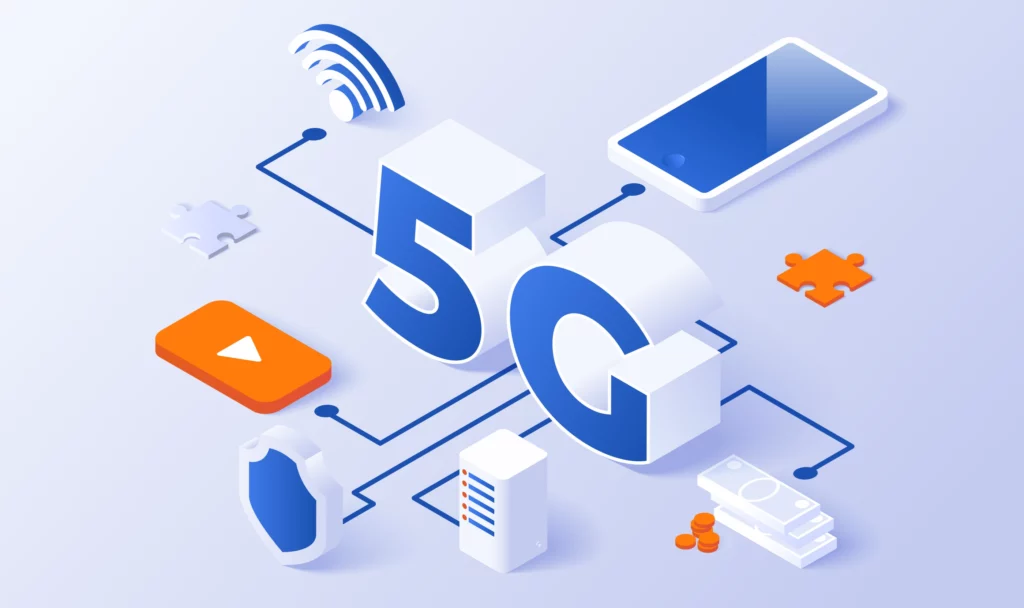There certainly has been a lot of talk about 5G lately. Major cellular carriers have gone head-to-head with their advertisement claiming to have ultra-fast and the most reliable 5G network. Even more, the news has called out 5G to be a potential threat to aircraft safety. With all this hype about 5G, what does it really mean to have 5G connectivity? Is it faster than 4G? Does one carrier have a better 5G network than the other? Is 5G the future of IoT (Internet of Things) connectivity? To truly answer these questions, we must take a more technical look at 5G technology.
5G Technology
5G NR (new radio) is the fifth-generation technology standard released by the 3GPP (3rd Generation Partnership Project). The standard protocol was released to create a new global standard that will improve speeds, reduce latency, and increase capacity in comparison to 4G LTE networks.
Although, 5G has been advertised to be up to 100 times faster than 4G there are many factors to take into consideration before implementing it into your business strategy. 5G was released in 2019, but that does not mean it was immediately available in all areas. As of March 2022, the network is not fully available in all covered areas yet. Carriers had to slowly upgrade their networks and this process is taking years to complete. There also has been the expansion into new spectrum bands used with 5G technology. This process of phasing in 5G has taken a substantial investment in time and money for operators to provide competitive 5G services.
To help with the migration from 4G LTE to 5G, there have been phases of 5G which includes non-standalone (NSA) and standalone (SA).
Non-standalone
Non-standalone was the first phase of 5G, using both 5G NR and the LTE Evolved Packet Core (EPC). NSA can achieve higher transfer speeds than LTE but doesn’t necessarily provide all the features 5G technology is truly capable of. The benefit of this first NSA phase is to allow the consumers to use 5G while the carriers are still transitioning to 5G standalone.
Standalone
Standalone 5G operates solely on the new 5G NR network core architecture. This includes the use of a simplified Radio Access Network (RAN) and cloud-native 5G core.
When in full standalone mode, users can start experiencing over 1Gbps speeds and lower lag time that carriers claim to provide. Although, there is another caveat to get these blazing fast speeds and that would be the radio frequencies.
Frequency
As we all know, wireless communication travels through the air via radio waves. Cellular technology uses a vast range of privately owned frequencies, and those frequencies are not easy to gain possession of. These spectrum bands used for cellular communication are controlled by the Federal Communications Commission (FCC), sold by auction, and owned by the cellular carriers.
Low-band frequencies can go as low as 450 MHz and higher frequencies can go up to 47 GHz. Generally, the lower the frequency, the lower the bandwidth or data transfer rate. The benefit of low-band is the range. Using 5G technology along with low-band frequencies, providers can cover larger areas with fewer cell towers at moderately good speeds. The higher the frequency, the higher the bandwidth. Although, there are limitations such as the distance the high-band waves travel and the ability to penetrate through objects, such as walls and windows.
C-band
The C-band spectrum is between 4 and 8 GHz, and here lies the airline debacle. This band includes the frequencies that our 2.4 GHz and 5 GHz WiFi operates within. It also includes some frequencies, around the 3-4 GHz range, where cellular carriers use for mid-band 4G LTE and 5G.
The reason for the FAA safety concern back in January 2022 is because Verizon and AT&T recently purchased frequencies that fall close to those used by older altimeter instrumentation. These altimeters are used to depict ground clearance while landing with low visibility. After testing the equipment and an agreement not to deploy C-band cellular frequencies within a two-mile radius of select airports, it seems we can lay this issue to rest.
Millimeter Wave
High-band millimeter wave (mmWave) is one of the newer spectrum bands that has extremely high throughput and ultra-low latency. It lies within the 24-47 GHz frequencies and can provide theoretical speeds up to 4Gbps. This may seem like the ultimate solution for fast wireless internet, but as previously mentioned, there is a huge limitation in distance and penetration. Because of these limitations, providers are slowly deploying this technology first in densely populated areas. This also requires many more small radios to be installed throughout cities to get good coverage in and around buildings.
5G Technology in Summary
5G technology can and does transmit over these low, mid, and high-band frequencies. It is important to understand that the frequencies that 5G broadcasts over does not determine whether it’s 5G or not. It’s the technology that the cellular connection uses that determines 5G status. Furthermore, you will only get the full 5G experience when connected to standalone 5G.
5G in IoT
Now that we have significantly increased the capacity, quadrupled the speed, and reduced the latency of cellular connectivity, the use cases for wireless devices are practically endless. The low latency wireless technology is allowing devices such as drones, autonomous vehicles, and medical equipment to operate over a 5G network. High speeds are providing homes and businesses with fixed wireless internet, even those in rural areas. High capacity is allowing thousands of IoT sensors to be installed throughout smart cities and for machinery in smart factories.
Fixed wireless internet via 5G provides fast and reliable internet connection to businesses and homes. Even those locations in rural areas are now able to get high-speed Internet. Before 5G traditional wired internet service providers were either not able to provide these services all together or speeds were not as sufficient.
Understanding the technology of 5G is essential for businesses looking to implement a 5G strategy. Most importantly, knowing that non-standalone can provide some benefits that 5G has to offer, but standalone 5G will be the standard in the future and should be the primary focus.



